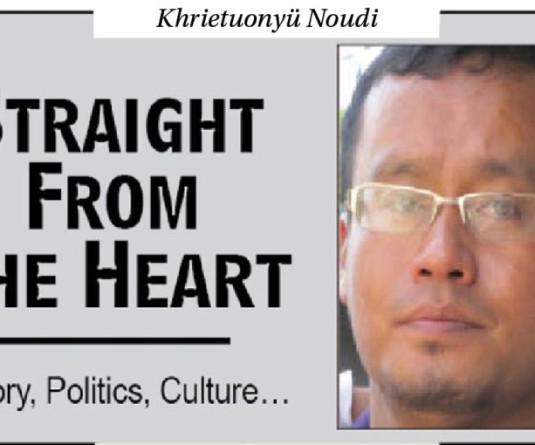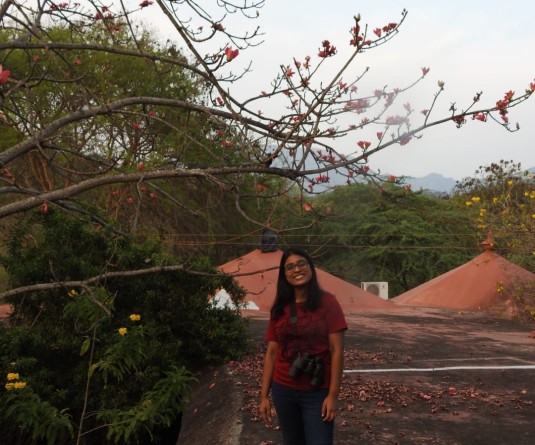
Tungshang Ningreichon
The belief that history, the grandeur of the Naga struggle will deliver what is sought instills hope. 58 years of bloodshed, lost of lives and living, accords and agreements, commitments and betrayals, promises and treacheries, untold pain and sufferings, militarization and organizations, wasted generations and a hopeful generation, the struggle for peace and dignity and the quest for Freedom-the greatest gift of God to mankind. This is the history of the Naga struggle. Let the history not go wasted but may the Nagas and the others learn from it. It is important to learn from the mistakes and failures of the Nagas-to strengthen the present and build the future.
The Ceasefire: Against the painful history of war and struggle the ceasefire agreement between the Government of India (GOI) and Naga Socialist Council of Nagalim (NSCN-IM) and subsequently with NSCN(K) is a positive step taken toward solving the protracted Indo-Naga conflict. However, the peace talk that is being held with the GOI is shrouded with uncertainty and disappointment. A tinge of fear and threat. One does not want to be cynical but the peace initiatives and efforts (ceasefire, peace talks) have not produced any desirable results. It is yet to be translated effectively into positive agenda. The Joint Communique of GOI and NSCN-IM, 11 July 2002, Amsterdam is an important political milestone and a historical fact where “The Government of India recognizes the unique history and situation of the Nagas” but this recognition should transcend the paper and should have real significance. The agreement that talks “should proceed in an accommodative and forward-looking manner so that a lasting solution can be arrived at” should also be honoured in letter and spirit. It is time some solutions come about and not just the exercises and extension of endless ceasefires.
The Peace talk: The onus of ‘solving and resolving’ lies with the GOI who are initiating peace talks with the Naga movement groups and many others. Numerous peace talks are being held without much headway in any of the cases. Nagas and people who believe in Just cause need to question the sincerity of GOI and challenge its policies towards people’s issue. There has been no breakthrough in the 40+ rounds of talks between GOI and NSCN-IM that leaves room for speculation and doubts. It also reflects the attitude of the GOI who talk peace but refuse to work on the solution for peace. The Nagas understand the difficulties of GOI but protracting the peace talk without taking any substantial and concrete steps will not help. It is damaging and confidence losing where they have cease-fires with two Naga movement groups but continues to incite and generate war within them. They cannot be handing out an olive branch with one hand and a live bomb with the other. Its agencies never rest. It sleeps with its eyes wide open. It has not stopped dividing the people.
War and peace: The 50+ years of Indian militarization is loud enough a lesson taught and a lesson learnt. Nagas needs to be healed from the long fear psychosis that gripped and arrested the society. The Naga movement groups can avoid spreading another. They cannot declare ceasefire with GOI but continue to kill each other. One can acknowledge the differences and understand the difficulties within the separate groups but their differences should not victimize and cripple the Naga society. It should not hinder the vision the Nagas are striving for. The solution to their differences does not lie in killing. It does not help. It does not take the struggle anywhere. At the rate of the existing internal feud one wonder where is the space for peace to set in. Peace becomes so meaningless. It actually delegitimizes the serious efforts and defeats the purpose of peace and the cause. The groups cannot be forced to reconcile if the effort does not come from them but they cannot be at war forever. They cannot be stopped from fighting but they cannot be killing in the name of the movement. ‘Don’t reconcile but talk. Fight but don’t kill’. The Naga civil societies must take the responsibility to facilitate. Reconciliation initiatives did not work as desired but that is not the end. Let people put the heads together to find that way because there has to be a way. The Naga movement groups must listen to the people because Naga movement derives its strength from the people and the mandate of the people. The movement in essence is rooted in the people.
People and Peace: Experiences have demonstrated that legitimate and ultimate power rest with the people. This is precisely why the people have a large stake in peace processes. The Naga movement groups should give sufficient space to the people to express and participate in all the efforts that will decide the future of the Nagas. Patronizing attitudes, petty and parochial problems should not take over the larger issue. It does not bring closer but distance them from the people. They should be mature and responsible enough to empower the people because a peoples movement is empowering not suppressive and oppressive. Nagas cannot afford to lose generation after generations and wait for another 50 years for another peace process to begin. So it is important that the Naga people are able to effectively transform the ongoing peace processes into the vision that is envisaged. The issue is not about who is on the negotiating table. It is about what the Nagas as a people want from the endeavor. ‘Empowering peace’ (Morung Express, June 4, 2006) was an important pointer to how people at the grassroots level can effectively contribute to peace. It is about seriously deliberating, facilitating and participating and not leaving the processes to the negotiating groups alone. It is not just about supporting but taking ownership of the peace processes.
People and dialogue: It is interesting to note how the quest for ‘an honourable solution’ is made to stall. The policy makers have created such a situation where ‘recognizing’ or ‘derecognizing’ stretch of land can propel a bloody war. The way the political complexities are presented in the face of the world is as though the Nagas are claiming ‘others’ land creating confusion and commotion which is unfortunate. The 58 years of struggle for right to self determination seems to be reduced to “territorial” issue which is superficial and digressing. It is stumbling block in the political dialogue demeaning the essence of the hard earned peace talk. It is not a blunder made but a strategy placed and succeeded when ceasefire was extended to all Naga inhabited areas “without territorial limit” and rolled back.
The issue of territory and boundaries cannot be made a bone of contention between different communities. It is too damaging and threatening. It marred relationships between communities. It struck the chord of ‘divide’ placing people especially the Meeteis and Nagas in a difficult situation. The seemingly ‘impossible to reconcile’ rigid position is so unreal because it doesn’t help anybody. It is important to be clear about the fact that the difficult situation is not the creation of the Meeteis or the Nagas or any other communities. It is just succumbing to the divisive tactics. Peace talk between the GOI and the Naga movement groups is not the end. It is not enough. It is equally important to have talks between different communities. Nagas must dialogue with the neighbouring communities to develop an understanding. People must not expect solutions from the GOI alone nor allow them to create more confusion. It is important that people create space and find opportunities to talk with each other and explore ways and means as to how to resolve issues and problems that confront them. It can be solved and it must be solved. There have been sporadic attempts to but it cannot end there. It has to be a constant effort at different levels-small groups, student level, women level, community level. People must talk. It is important.
End note: One wonders do boundaries mean building walls and fences or is it more of a symbolic ownership and political expression because no matter who owns the land different people live together sharing spaces and resources and will continue to live together in years and generations to come.





